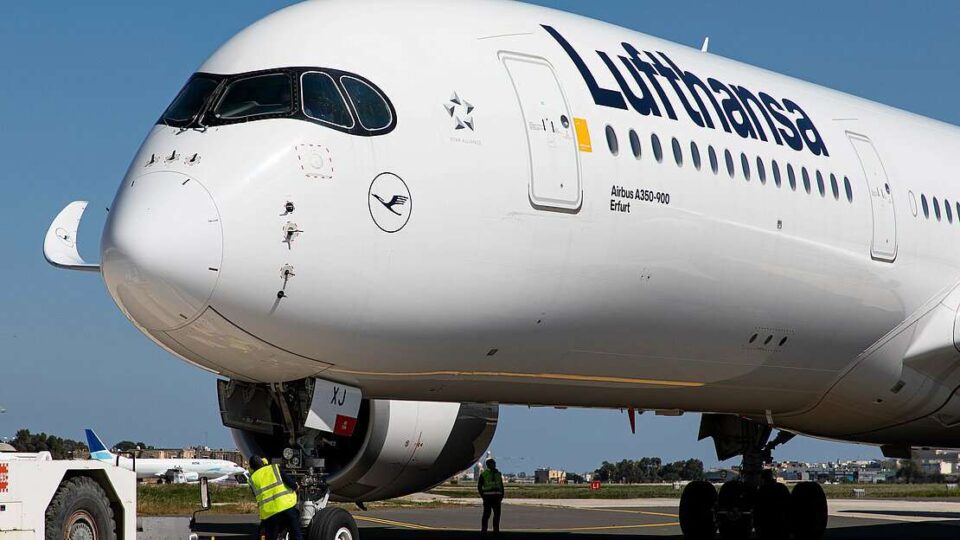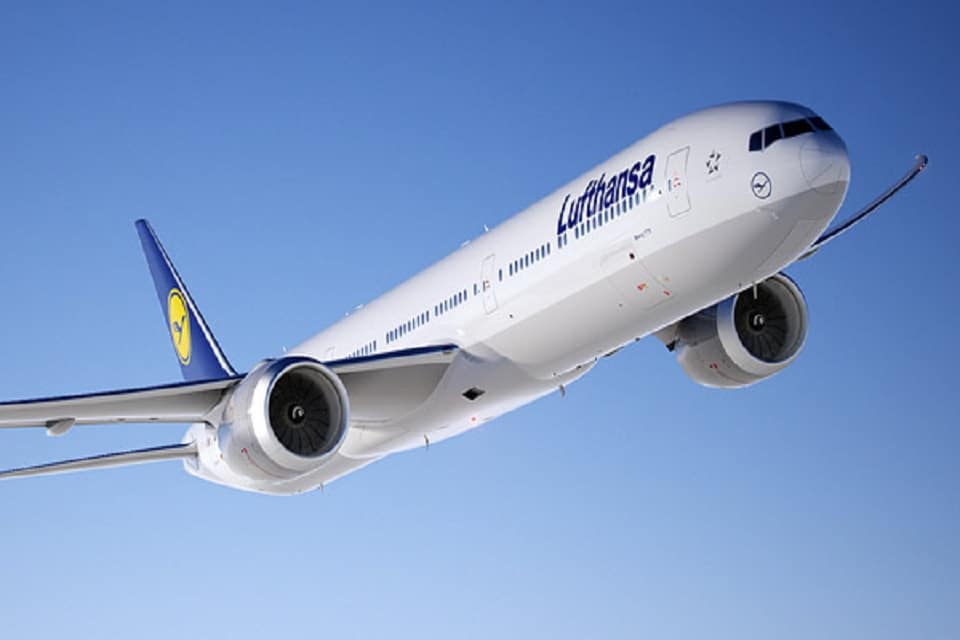Aerospace
Lufthansa to buy 10 new long-haul aircraft and drops 4 engine aircraft.

- Lufthansa Purchase of five Airbus A350-900s and five Boeing 787-9 aircraft
- Aircraft contribute strongly to enhancing sustainability by reducing fuel consumption and carbon emissions by 30 percent
- Lufthansa Group fleet: less aircraft model variety, more efficiency
- Savings though lower operating cost
Lufthansa Group is accelerating the modernization of its fleet. New, highly cost and fuel-efficient aircraft are replacing older types on short, medium and long-haul routes. As a result, the Executive Board of Deutsche Lufthansa AG decided to buy ten long-haul aircraft: five Airbus A350-900s and five Boeing B787-9. The Supervisory Board approved the purchase today. These aircraft will be operated by Lufthansa Airline and strengthen the 5-star premium offer of the Group’s core brand.
Top 10 Long Haul Non-Stop Flights-2021
As part of the long-standing fleet renewal program, a total of 175 new aircraft will be delivered to Lufthansa Group airlines this decade.
Carsten Spohr, Chairman of the Executive Board and CEO of Deutsche Lufthansa AG, said:
“Even in these challenging times, we are continuing to invest in a more modern, more efficient and a lower emission Lufthansa Group fleet. At the same time, we are pushing ahead with the modernization of our long-haul fleet even faster than planned prior to the coronavirus pandemic due to anticyclical opportunities. The new aircraft are the most modern of their kind. We want to further expand our global leadership role, among other things, with cutting-edge premium products and a state-of-the-art fleet – especially because we have a responsibility to the environment.”
Boeing 787-9
The first Boeing 787-9 are scheduled to fly for Lufthansa as early as next winter, with others to follow in the first half of 2022. Today’s decision brings the total number of firm orders for Boeing 787-9s and Boeing 777-9s to 45 aircraft.
Due to the dramatic impact of the coronavirus pandemic on global aviation, aircraft that had been ordered by some airlines could not be delivered in the past twelve months. Lufthansa held talks with Boeing and found a way to buy five 787-9 that were already manufactured. At the same time, the Group reached an agreement with Boeing on a restructured delivery plan.
Lufthansa orders 20 additional A350-900 wide-body aircraft
Airbus A350-900
The five newly ordered Airbus A350-900s will be delivered in 2027 and 2028. This brings the total number of firm orders for the A350-900 to 45 aircraft. The Lufthansa Group also agreed with Airbus on a restructuring of planned deliveries.
In addition to renewing its long-haul fleet, Lufthansa is also focusing on the latest technology, maximum efficiency and the highest level of customer comfort on short-haul routes. In the current year alone, Lufthansa will take delivery of a new, fuel-efficient Airbus A320 family aircraft for short- and medium-haul routes on average every month. Delivery of a further 107 Airbus A320 Family aircraft is planned until 2027.

Aerospace
Boeing Transfers Rocket Stage to NASA, Paving Way for Human Moon Mission

Boeing has achieved a significant milestone by providing NASA with the second core stage of the Space Launch System (SLS) rocket.
This crucial component, crafted at NASA’s Michoud Assembly Facility (MAF), is set to propel the Artemis II crew into lunar orbit, marking humanity’s return to deep space after a 50-year hiatus.
The monumental Boeing-built rocket stage, the largest element of the Artemis II mission, will embark on a journey aboard the Pegasus barge, traveling 900 miles to NASA’s Kennedy Space Center.
Comparison of two legendary aircraft B777x vs B747 aircraft:Click here
Upon arrival, it will be meticulously integrated with other essential Artemis II components, including the upper stage, solid rocket boosters, and NASA’s Orion spacecraft within the iconic Vehicle Assembly Building. This intricate integration process is a vital step toward the eagerly anticipated Artemis II launch, slated for 2025.
“Boeing-built products helped land humankind on the moon in 1969, and we’re proud to continue that legacy through the Artemis generation,” remarked Dave Dutcher, vice president and program manager for Boeing’s SLS program. “Together, with NASA and our industry partners and suppliers, we are building the world’s most capable rocket and paving the way to deep space through America’s rocket factory in New Orleans.”
NASA, Lockheed Martin Reveal X-59 Quiet Supersonic Aircraft:Click here
The delivery of Core Stage 2 marks a significant achievement in the evolution of the SLS rocket. Towering over 200 feet and powered by four RS-25 engines, this core stage, coupled with two solid-fueled booster rockets, will generate a staggering 8.8 million pounds of thrust. This immense power is crucial to launching Artemis II and future missions into the vast expanse of space.
The SLS rocket stands unparalleled in its capability to transport both crew and substantial cargo to the moon and beyond in a single launch. Its extraordinary capacity will facilitate the delivery of human-rated spacecraft, habitats, and scientific missions to destinations including the moon and Mars, ushering in a new era of space exploration.
-

 Travel1 week ago
Travel1 week agoAir India to Expand US Operations with Three New Routes After a Decade
-

 Travel2 weeks ago
Travel2 weeks agoWhy We Should Avoid These Stamps in a Passport
-

 Airlines1 month ago
Airlines1 month agoInvestigations Reveal Fake Chinese Titanium in Boeing and Airbus Jets
-

 Tech4 weeks ago
Tech4 weeks agoChina’s CATL Plans 1,800-Mile Electric Plane Launch by 2027
-

 Airport3 days ago
Airport3 days agoTop 10 Largest Airports in the World by Size
-

 Aerospace4 weeks ago
Aerospace4 weeks agoChina’s Fighter Jets Turn Wings into Autonomous Drones
-

 Airlines4 days ago
Airlines4 days agoAir India Rolls Out A350s for Delhi-New York JFK and Newark Routes
-

 Defence3 weeks ago
Defence3 weeks agoBoeing Enhances Chinook with New Engines and Block II Upgrades at $96 Million








